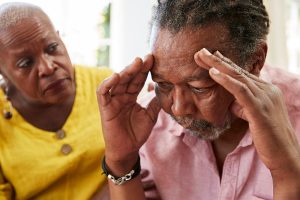The number of Americans seeking treatment for anxiety and depression has soared during the COVID-19 pandemic, creating what a leading medical association terms a “mental health tsunami.”
That’s the key takeaway from a nationwide survey of psychologists by the American Psychological Association (APA).
“[The findings] highlight what we have been saying since the early days of the pandemic — we are facing a mental health tsunami,” said Arthur Evans Jr., the association’s CEO. “We need to continue to support treatment via telehealth, and we must invest in screening, prevention, and innovative interventions to expand access to various levels of care.”
In all, 84% of respondents who treat anxiety orders and 72% of those who treat depression reported an increase in demand for treatment this year, compared with 2020 rates of 74% and 60%, respectively.
The survey also found a stepped-up demand this year for help with other mental health issues, including sleep disorders, obsessive-compulsive and related disorders, and substance-related and addictive disorders.
Compared to last year, nearly twice as many respondents (62%) said they had received more referrals this year than last, and 68% of those with a waitlist said it had grown longer since the start of the pandemic.
And psychologists are struggling to meet the needs. Forty-one percent said they were unable to meet the demand for treatment, up from 30% last year. The percentage who said they felt burned out also rose, to 46% from 41% last year.
The new survey included more than 1,100 psychologists and was conducted between Aug. 30 and Sept. 17.
“As more people seek treatment for mental health conditions, the demands on psychological practitioners have increased,” Evans said in an association news release. “Like many other health care providers, psychologists are feeling the pressure.”
Many psychologists have switched to telehealth, and 96% continue to provide at least some services remotely, the survey found.
In 2021, only 4% have resumed seeing patients only in person, but 50% have adopted a hybrid approach of seeing some patients in person and some remotely, suggesting a slow progression back to the office, according to the APA.
In coping with the increased demands, 77% of respondents said they were maintaining a positive work-life balance, up from 66% last year. Sixty-four percent said they practiced self-care, compared to 55% last year.
More information
The World Health Organization has more on mental health and COVID-19.
SOURCE: American Psychological Association, news release, Oct. 19, 2021
Source: HealthDay
Copyright © 2025 HealthDay. All rights reserved.

















